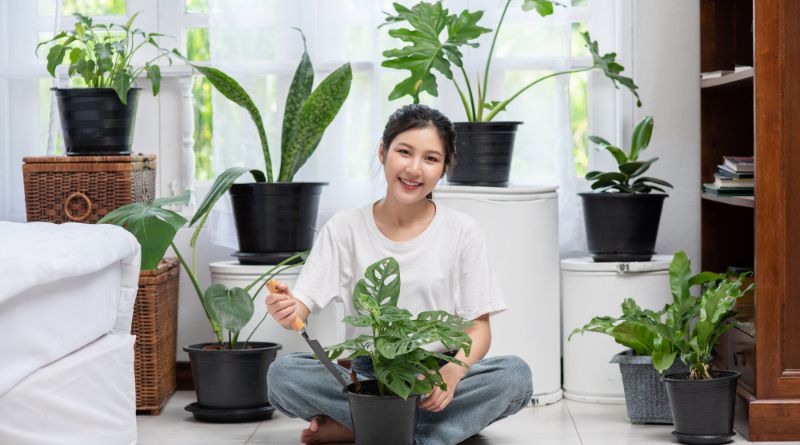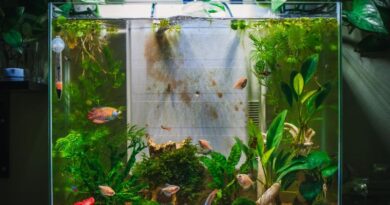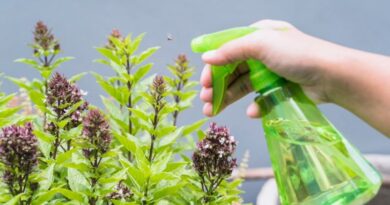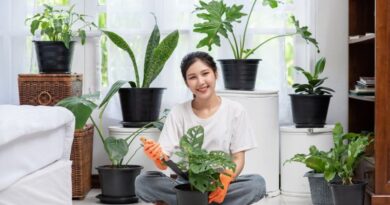Houseplants are more than just decorations; they play a vital role in enhancing our living environments and promoting wellness. While many people desire the benefits of indoor greenery, not everyone has the time or expertise to care for high-maintenance plants. Luckily, there is a wide selection of low-maintenance houseplants available, making it easier for busy individuals or beginners to enjoy the benefits of indoor gardening.
These plants require minimal attention and thrive in various conditions, from low light to bright sunlight. By incorporating low-maintenance houseplants into our homes, we can effortlessly improve air quality, reduce stress levels, and enhance overall well-being. Whether you’re a seasoned plant enthusiast or a novice gardener, there’s a low-maintenance houseplant out there for everyone, bringing beauty and vitality to our living spaces with minimal effort.
Snake Plant (Sansevieria trifasciata)
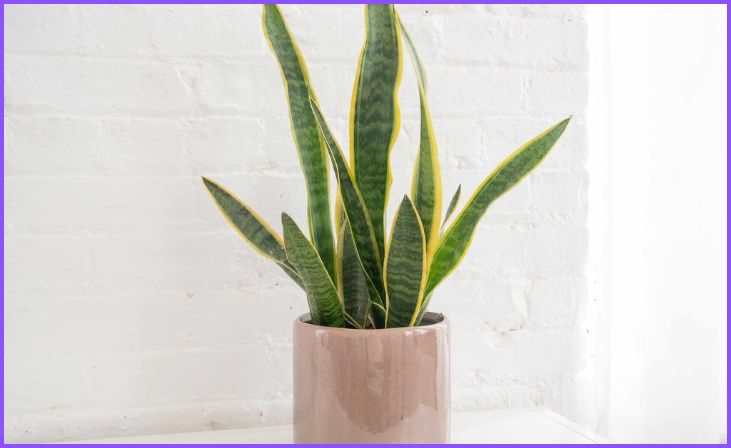
Also known as Mother-in-Law’s Tongue, the Snake Plant is a popular choice for those seeking a resilient and easy-to-care-for plant. Its long, sword-shaped leaves require minimal watering and can tolerate a variety of light conditions, from low to bright indirect light. This makes it an ideal option for offices or rooms with limited natural light. Snake Plants are also known for their air-purifying qualities, making them a practical and visually appealing addition to any space.
Quick Link: Embrace Boho Style: 10 Elements to Infuse Your Home with Eclectic Charm
Pothos (Epipremnum aureum)
Pothos, often referred to as Devil’s Ivy, is another versatile and low-maintenance houseplant. With its cascading vines and heart-shaped leaves, Pothos adds a touch of greenery to shelves, mantles, or hanging baskets. This plant is forgiving when it comes to watering, as it can tolerate periods of drought. Pothos thrives in moderate to low light conditions but will also adapt to brighter environments. Regular pruning helps maintain its lush appearance, but overall, it requires minimal attention, making it perfect for beginners.
ZZ Plant (Zamioculcas zamiifolia)

The ZZ Plant is prized for its glossy, dark green foliage and ability to thrive in low-light conditions. Its waxy leaves retain moisture, allowing the plant to withstand periods of neglect or irregular watering. ZZ Plants are slow growers and rarely require repotting, making them an excellent choice for those looking for a low-maintenance option. Additionally, this plant is highly resistant to pests and diseases, further reducing the need for intervention. Simply place it in a corner with indirect light, and the ZZ Plant will continue to flourish with minimal fuss.
Spider Plant (Chlorophytum comosum)
Spider Plants are known for their arching leaves adorned with tiny plantlets, giving them a distinctive appearance. These hardy plants are tolerant of a wide range of conditions, including varying light levels and temperatures. Spider Plants prefer bright, indirect light but will also thrive in low-light environments. They are adaptable to different watering schedules and will even purify the air by removing toxins such as formaldehyde and carbon monoxide. With minimal maintenance, Spider Plants can produce cascading foliage that adds visual interest to any room.
Peace Lily (Spathiphyllum)
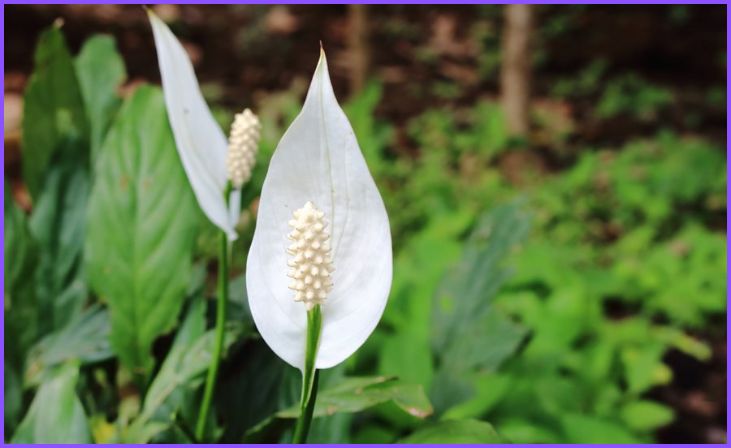
The Peace Lily is prized for its elegant white blooms and lush, dark green leaves. Despite its delicate appearance, this plant is surprisingly resilient and requires minimal care. Peace Lilies thrive in low to moderate light conditions and prefer to be kept evenly moist, though they can tolerate occasional drying out between waterings. These plants are also effective at removing indoor air pollutants, making them beneficial for indoor air quality. With proper care, Peace Lilies can bloom multiple times throughout the year, adding beauty and serenity to any space.
Rubber Plant (Ficus elastica)
With its large, glossy leaves and striking appearance, the Rubber Plant is a popular choice for adding a touch of tropical flair to indoor spaces. This plant is relatively low maintenance, requiring only occasional watering when the top inch of soil feels dry. Rubber Plants prefer bright, indirect light but can adapt to lower light conditions as well. Regular dusting of its leaves helps to keep them glossy and vibrant. With its upright growth habit and ability to tolerate neglect, the Rubber Plant is an excellent option for busy individuals or those new to plant care.
Jade Plant (Crassula ovata)

The Jade Plant, also known as the Money Plant or Lucky Plant, is revered for its resilience and symbolic significance. With its fleshy, oval-shaped leaves and sturdy stems, the Jade Plant is easy to care for and can thrive in a variety of environments. This plant prefers bright, indirect light but can tolerate lower light conditions as well. Jade Plants are drought tolerant and only require occasional watering when the soil has dried out completely. With its compact growth habit and minimal water requirements, the Jade Plant is an ideal choice for adding a touch of green to desks, shelves, or windowsills.
Aloe Vera (Aloe barbadensis)
Aloe Vera is not only prized for its medicinal properties but also for its ornamental value as a houseplant. With its succulent leaves and minimal water requirements, Aloe Vera is well-suited to busy lifestyles. This plant prefers bright, indirect light but can also tolerate low-light conditions. Aloe Vera requires infrequent watering, as overwatering can lead to root rot. The gel inside its leaves has various uses, including soothing burns and moisturizing skin, making Aloe Vera both practical and beautiful.
Quick Link: 8 Charming Pergola Ideas That Will Help You Create A Backyard Oasis
Philodendron (Philodendron spp.)
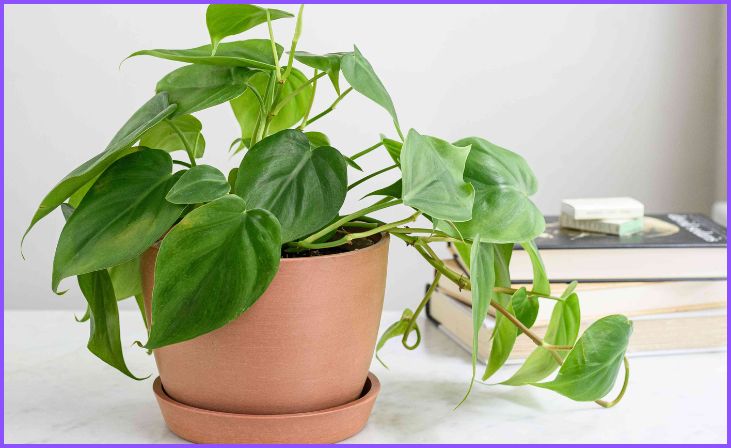
Philodendrons encompass a diverse group of plants known for their lush foliage and easy-going nature. These plants come in various shapes, sizes, and leaf patterns, making them versatile options for any indoor environment. Philodendrons prefer moderate to bright, indirect light and should be watered when the top inch of soil feels dry. They are relatively pest-resistant and can withstand periods of neglect. With proper care, Philodendrons can grow into bushy, attractive specimens that enhance the aesthetics of any room.
Bottom Line
Incorporating low-maintenance houseplants into your home enhances its ambiance and aesthetic appeal while offering multiple health benefits. Regardless of your experience level with plants, these nine options require minimal care, making them ideal for busy individuals or beginners in indoor gardening. By introducing these plants into your living space, you not only beautify it but also purify the air and reduce stress levels.
Experimenting with different varieties allows you to find the perfect match for your lifestyle and preferences, whether it’s the striking foliage of a Rubber Plant or the elegant blooms of a Peace Lily. Ultimately, cultivating indoor plants creates a serene environment that promotes well-being and brings joy to your daily life.
FAQs
Low-maintenance houseplants typically require watering only when the top inch of soil feels dry. This can range from once a week to once every few weeks, depending on the plant and environmental conditions.
Yes, many low-maintenance houseplants, such as Snake Plants and ZZ Plants, can thrive in low-light environments. While they may not grow as quickly as they would in brighter conditions, they can still survive and even thrive with minimal natural light.

